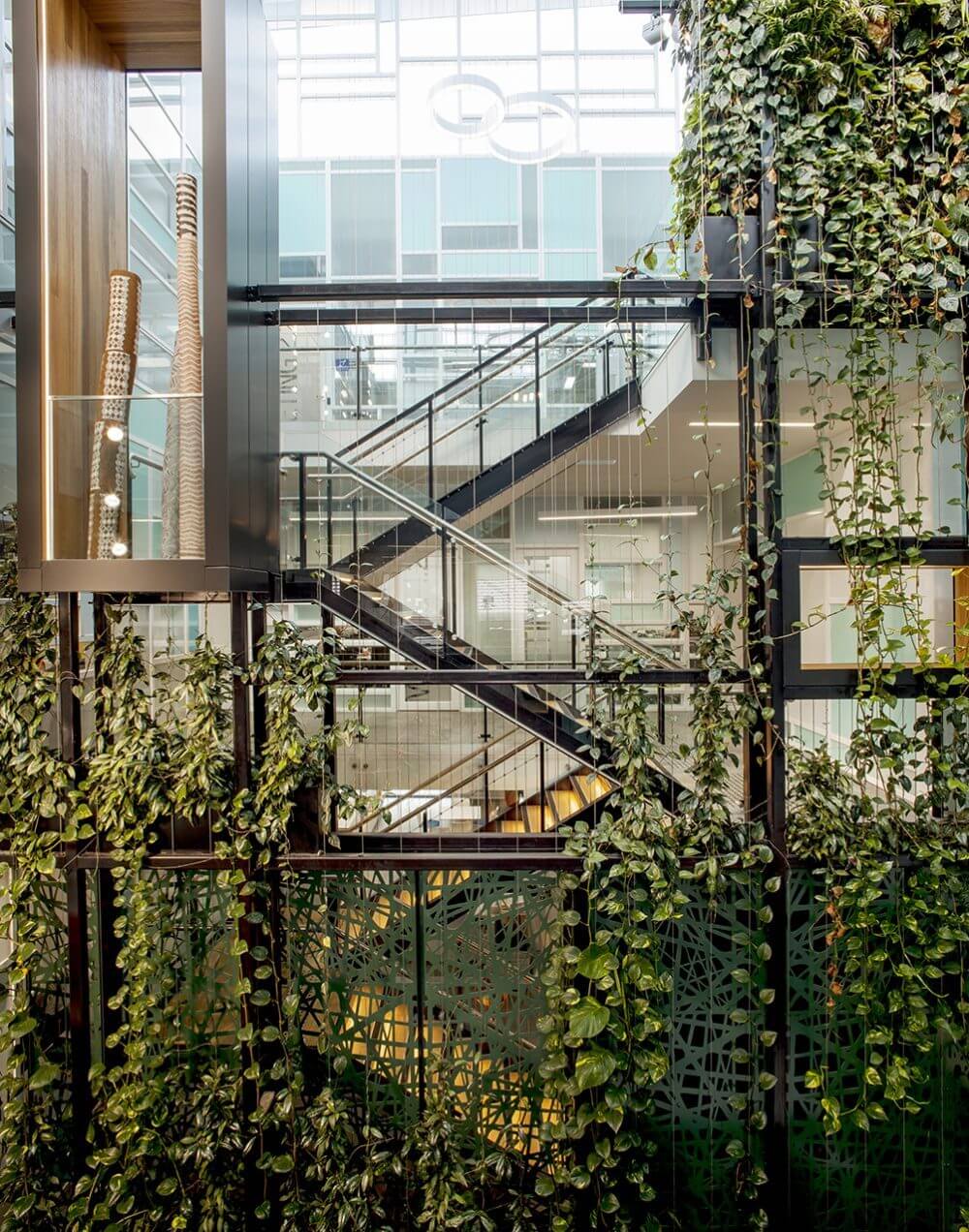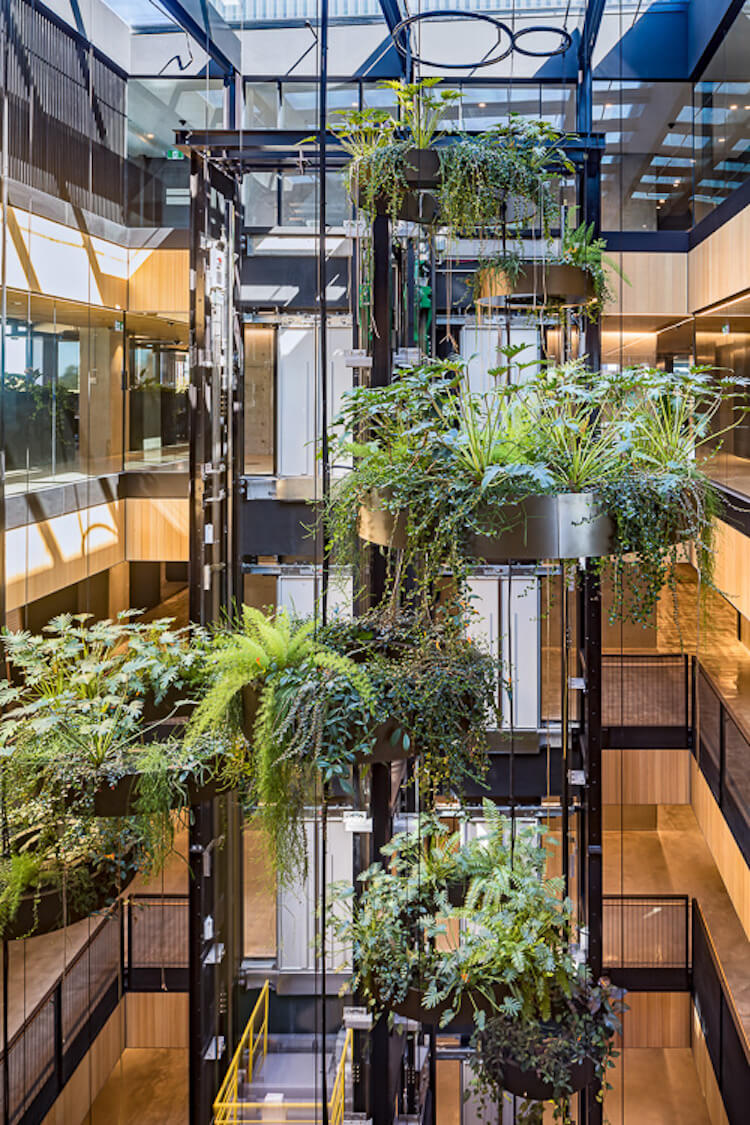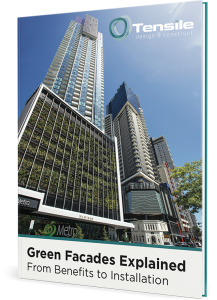While indoor plants in pots bring some of the outside in, indoor green walls and climbing plant trellises take this effect to another level altogether.
Not only do indoor vertical gardens look great and take up less room than pot plants, they offer a range of health and financial benefits as well.
Let’s take a look at the types of indoor green walls and some of the benefits.
Types of indoor vertical garden systems
There are several types of commercial internal green infrastructure systems. These include:
- Green wall – consisting of dense herbaceous or shrub-like plants in containers or modular panels, usually mounted on a rigid mesh support structure.
- Green facade – climbing and twining plants on a light trellis system (e.g. made from stainless steel mesh). An example is the indoor green facade at the Stonnington Council offices in Melbourne, which uses stainless steel cables to support climbing greenery across multiple storeys.
- Hybrid green system – a blend of both of the above such as the one at Westfield Warringah mall, which consists of climbing plants on stainless steel mesh in combination with pre-grown green wall panels.
- Breathing wall – this is a type of indoor green wall with additional technology (such as a fan system) to accelerate removal of pollutants.
- Indoor hanging garden – hanging plants suspended from an upper support system or ceiling, such as the installation at The Workshop in Pyrmont.
4 proven benefits of indoor green walls

1. Cleaner, healthier air
In the modern world, we spend about 90% of our time indoors. Indoor vertical gardens improve indoor air quality by acting as natural filtration systems. Plants reduce CO2 and remove contaminants such as VOCs, fumes, bacteria and dust through various natural mechanisms, resulting in healthier and cleaner air.
2. Improved health and wellbeing
A cleaner environment from indoor greenery can lead to better physical wellbeing for occupants – leading to lower incidences of headaches, sore throats, wheeziness, itchy skin, and eye irritation. In a workplace environment, this can translate to reduced absenteeism and improved productivity of workers. A review study by the World Health Organisation shows that urban green spaces in general can reduce blood pressure and cardiovascular risk and improve immunity, mental health and cognitive function.
3. Enhanced learning in schools
Green infrastructure in schools can help students succeed by enhancing learning and by facilitating social, physical and mental development.
Green walls are an excellent option for multistorey ‘vertical schools’ that would like to incorporate greenery indoors but don’t have the ground space.
4. Reduced costs
Both outdoor and indoor green walls help cool the air, which can in turn lower HVAC costs and reduce emissions.
Each dollar invested in an internal breathing wall in a workplace provides more than $3 of benefits, largely due to improvements in employee health and productivity.
Considerations for indoor green infrastructure
Commercial indoor green walls and vertical gardens can be installed in offices, apartment buildings, schools, universities, hospitals, aged care facilities, shopping centres, public buildings and more.
Considerations include site assessments, visual design, plant placements, costs and ongoing maintenance.
If you are considering installing an indoor vertical garden, please get in touch with our team to discuss the possibilities!






































